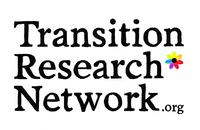Reflecting on what we do
Critical reflection on research practice is built in at all stages, as an integral part of the research process.
+problem
Critical reflection on research is an important part of an iterative research process. Iterative means that changes can be made to practice according to what is learnt from the field. Non-reflexive research fails to be responsive and therefore relevant in this way.
+background
While a key part of 'science' is being critical of its practices, this is often only undertaken after a project is complete. In a model of research where learning on the project is built into changes as we go along, reflection is an important element that is integrated into ongoing research. It can also involve collective reflection (on projects which are collaborative) which enriches and improves the research process.
This reflection, or "reflexivity", is now a common practice in qualitative research, but can be extended to all forms of research. It first arose from feminist critiques of scientific knowledge, which accused researchers of too often performing a "god-trick" of seeing everything from nowhere - i.e. researchers appearing to have an almost divine ability to observe and pronounce on the world they are studying, without considering how their own position and practices affect what they are studying and what conclusions they draw.
What does this mean in practice?
There are different levels of reflexivity: on doing, on methods, and on the inner place we act from (consciousness).
Otto Scharmer suggests different ways of listening for different types of science. He discussed the interface and connection between the visible and the invisible dimensions of the social field. An organization's "topsoil" exists where these two worlds connect, meet and intertwine:
- The visible matter: The do, say and see, the social action that could be captured and recorded by a camera'
- The invisible realm: The interior condition from which the participants operate - the originating source of all we do say and see
As a consequence, we need to learn to attend to both dimensions simultaneously: what we say, see, and do (our visible realm) and the inner place from which we operate (our invisible realm, in which our sources of attention and intention reside and from which they operate). The intermediate sphere that links both dimensions is called the field structure of attention - the functional equivalent of the topsoil in agriculture, linking both dimensions of the field.
The field structure of attention concerns the relationship between observer and observed. It concerns the quality of how we attend to the world. It has four different qualities.
- In me: what I perceive to see in my habitual way of seeing and thinking -> habits
- In it: what I perceive with my senses and mind wide open -> open mind
- In you: what I tune in and sense to with my heart wide open ->open heart
- In now: what I understand from the source of the bottom of my being that is, from attending with my open will.
4 ways of listening
- Downloading: "yeah I know that already"
- Object focused or factual listening: “Oh look at that!” Focus on: What differs from my previous knowledge?
- Empathic listening: "Oh yes I know how you feel." When we listen empathically our perception shifts, we have to open our hearts and will forget about our own agenda and begin to see how the world enfolds through somebody else. Empathic listening is a skill that can be cultivated.
- Generative listening or listening from the emerging fields of the future: "I can´t express what I experience in words – My whole being has slowed down, I feel more quiet and present more my real self. I am connected to something larger than myself." It requires to access our heart and our open will – our capacity to connect to our highest future possibility that wants to emerge.
He therefore suggest a synthesis of three different ways of observations:
- Science: let the data speak,
- Action research: you can´t understand a system unless you change it
- Evolution of consciousness and self (illuminating the blind spot)
--Gesa Maschkowski.....2013-01-06 21:48:06 +0000
+solution
Built in critical reflection on research practice at all stages, as an integral part of the research process. Practice different forms of listening, no matter what model of science the research is pursuing. Always evaluate practice to increase learning for next time.
+sources
Haraway, Donna. (1988). Situated knowledges: The science question in feminism and the privilege of partial perspective. Feminist Studies, 14(3), 575-599.
Otto Scharmer - reference from Gesa needed
